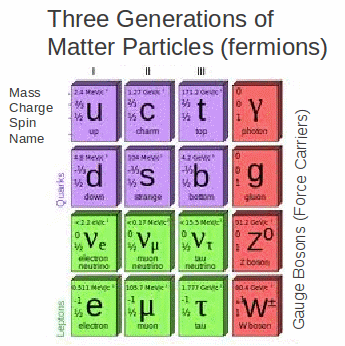The standard model of particle physics is an attempt – quite successfully – to explain the Universe in terms of fundamental particles, which cannot be broken down into smaller particles, and can be conveniently summarised in the following diagram.

The fundamental particles can be grouped into fermions and bosoons. Fermions are matter particles, making up all matter. They have half a unit of spin and obey the Pauli exclusion principle. The particles in the standard model can be put into two groups: fermions and bosons. Bosons are force carrying particles, carring forces between matter particles.
Of the four bosons, the photon is the most familiar, carrying the electromagnetic force between charged particles and moving charges. Gluons carrying the strong nuclear force between quarks. The photon carries the electromagnetic force - photons are responsible for electromagnetic radiation, electric fields and magnetic fields. The gluon carries the strong nuclear force between quarks and particles made up of quarks. The W + , W - and Z 0 bosons carry the weak nuclear force which can cause radioactive decay. When one quark changes into another quark, one of these bosons is produced, which in turn decays into fermions.
Fermions can be divided into quarks and leptons. Mesons, protons and neutrons are made up of quarks. Electrons and neutrinos are leptons and are fundamental particles according to the standard model. Quarks experience the strong nuclear force but leptons do not.
Fermions – the matter particles - are subdivided into three generations. The first generation contains the fermions which we are made of - electrons, up and down quarks and the neutrino. Second generation leptons have greater masses than first generation leptons and second generation leptons have less mass than third generation leptons.
In addition, every particle has an associated antiparticle with the same mass but opposite charge – though for the photon and Z 0 the particle and antiparticle are the same. The standard model contains 12 quarks, which come in three colours, 8 gluons, 12 leptons, the four bosons shown above and the anticipated Higgs boson.
